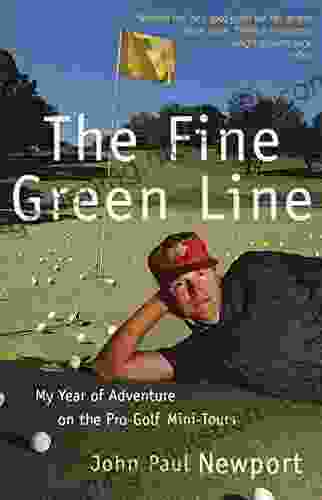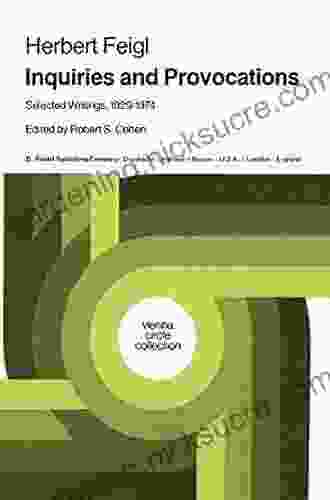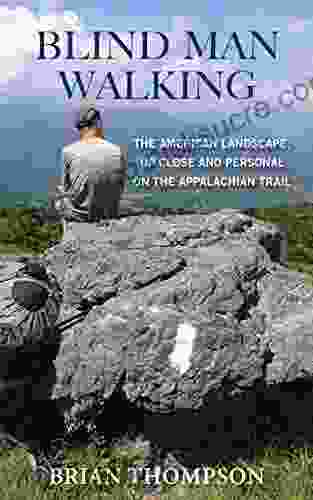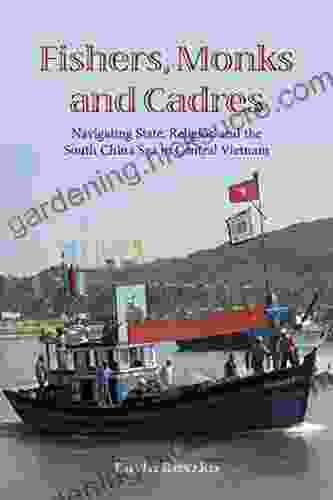The Fine Green Line: Nature and Urbanization in Harmony

The Interplay of Two Worlds
As cities continue to expand and human populations grow, the interaction between nature and urbanization has become increasingly complex. The concept of "The Fine Green Line" refers to the delicate balance between natural ecosystems and the built environment, where vegetation, wildlife, and other natural elements coexist alongside human structures and infrastructure. This relationship is crucial for the sustainability and well-being of urban communities.
4.1 out of 5
| Language | : | English |
| File size | : | 455 KB |
| Text-to-Speech | : | Enabled |
| Screen Reader | : | Supported |
| Enhanced typesetting | : | Enabled |
| Word Wise | : | Enabled |
| Print length | : | 336 pages |
In this article, we will explore the myriad ways in which nature and urbanization intersect, examining the benefits and challenges that arise from this dynamic interplay. From green roofs and urban forests to wildlife corridors and community gardens, we will uncover the innovative strategies and practices that foster harmony between these two seemingly disparate worlds.
Benefits of the Fine Green Line
Environmental Resilience and Climate Adaptation
Urban green spaces play a vital role in mitigating the effects of environmental degradation and climate change. Trees, for instance, absorb carbon dioxide and release oxygen, reducing air pollution and mitigating global warming. They also provide shade and cool down urban areas, reducing the heat island effect that can make cities uncomfortable and even dangerous during extreme heat events.
Green infrastructure, such as rain gardens and permeable pavements, helps manage stormwater runoff, reducing flooding and improving water quality. By retaining and filtering rainwater, these systems prevent pollutants from entering waterways and support healthy aquatic ecosystems.
Biodiversity and Wildlife Conservation
The Fine Green Line provides habitat and connectivity for a wide range of plant and animal species. Urban parks, nature preserves, and green corridors allow wildlife to move safely through the city, ensuring genetic diversity and supporting healthy populations. These green spaces can harbor a surprising amount of biodiversity, contributing to the ecological balance of urban environments.
For example, New York City's Central Park is home to over 250 bird species, while the High Line, an elevated park built on an abandoned railway, supports a diverse array of plants and insects. These urban oases serve as vital refuges for wildlife, connecting isolated populations and preserving the city's natural heritage.
Health and Well-being
Studies have shown that spending time in nature has a myriad of benefits for human health and well-being. Exposure to green spaces can reduce stress, improve mental health, and promote physical activity. Research suggests that living near trees, parks, and other natural areas is associated with lower rates of cardiovascular disease, respiratory problems, and obesity.
Urban green spaces also provide opportunities for recreation and social interaction. Parks, community gardens, and walking trails offer places for people to gather, relax, and connect with their surroundings. These spaces foster a sense of community and encourage active lifestyles, contributing to the overall health and vitality of urban residents.
Challenges and Opportunities
Urbanization and Habitat Loss
While the Fine Green Line offers immense benefits, urbanization also poses challenges to natural ecosystems. As cities expand and land is developed, natural habitats are often fragmented or destroyed, leading to the loss of biodiversity and disruption of ecological processes.
Concrete and asphalt surfaces replace permeable surfaces, increasing stormwater runoff and reducing the ability of water to infiltrate the ground. This can lead to flooding, erosion, and impaired water quality.
Pollution, noise, and artificial light can also have negative impacts on wildlife, disrupting natural behaviors and reducing reproductive success.
Balancing Development and Conservation
Striking a balance between urban development and natural conservation is a complex and ongoing challenge. Cities need to accommodate growing populations and economic activity, while also preserving and enhancing existing green spaces.
Innovative approaches are needed to integrate natural elements into urban design. Green roofs and vertical gardens, for example, create green oases on top of buildings, providing habitat for wildlife and reducing energy consumption. Biophilic architecture incorporates natural elements into building design, enhancing human well-being and connecting people with the natural world.
Urban planning must prioritize the preservation and creation of green spaces, including parks, nature reserves, and wildlife corridors. This requires long-term vision and collaboration between governments, developers, and community organizations.
Case Studies and Best Practices
London's Urban Green Grid
London's Urban Green Grid is a comprehensive network of parks, green spaces, and wildlife corridors that connects people and nature throughout the city. The grid includes over 3,000 hectares of green space, ranging from large parks and natural reserves to small green oases in densely populated neighborhoods.
The Green Grid provides habitat for a wide range of wildlife, including foxes, badgers, and birds of prey. It also offers opportunities for recreation, relaxation, and environmental education. The grid is a testament to the transformative power of green infrastructure in creating a healthy and sustainable urban environment.
Toronto's High Park
High Park in Toronto is a 165-hectare urban park that is home to diverse ecosystems, including forests, meadows, and a river. The park provides habitat for over 200 bird species and is a popular destination for hiking, picnicking, and wildlife viewing.
High Park is also an important part of Toronto's Ravine System, a network of interconnected natural areas that provide green corridors for wildlife movement and recreation opportunities for residents. The Ravine System demonstrates the value of preserving natural areas within urban environments, creating a sustainable and livable city.
The Fine Green Line symbolizes the delicate yet vital relationship between nature and urbanization. By embracing innovative approaches to urban design and conservation, we can create sustainable cities that balance human needs with the preservation of natural ecosystems.
The benefits of investing in the Fine Green Line are multifaceted, contributing to environmental resilience, biodiversity, and human health and well-being. As we continue to navigate the challenges of urbanization, let us prioritize the preservation and enhancement of green spaces, ensuring a harmonious coexistence between nature and the built environment for generations to come.
4.1 out of 5
| Language | : | English |
| File size | : | 455 KB |
| Text-to-Speech | : | Enabled |
| Screen Reader | : | Supported |
| Enhanced typesetting | : | Enabled |
| Word Wise | : | Enabled |
| Print length | : | 336 pages |
Do you want to contribute by writing guest posts on this blog?
Please contact us and send us a resume of previous articles that you have written.
 Fiction
Fiction Non Fiction
Non Fiction Romance
Romance Mystery
Mystery Thriller
Thriller SciFi
SciFi Fantasy
Fantasy Horror
Horror Biography
Biography Selfhelp
Selfhelp Business
Business History
History Classics
Classics Poetry
Poetry Childrens
Childrens Young Adult
Young Adult Educational
Educational Cooking
Cooking Travel
Travel Lifestyle
Lifestyle Spirituality
Spirituality Health
Health Fitness
Fitness Technology
Technology Science
Science Arts
Arts Crafts
Crafts DIY
DIY Gardening
Gardening Petcare
Petcare Oscar Wegner
Oscar Wegner Edward Rosenfeld
Edward Rosenfeld 50minutos Es
50minutos Es Tim R Wolf
Tim R Wolf Brian Kent
Brian Kent Betty Crocker
Betty Crocker Bonnie Scott
Bonnie Scott Diane Duane
Diane Duane Tasha Dunn
Tasha Dunn Charles Seife
Charles Seife Bobby Blair
Bobby Blair Andrew Collins
Andrew Collins John Iceland
John Iceland Elizabeth D Hutchison
Elizabeth D Hutchison Herbert Feigl
Herbert Feigl 3rd Ed Edition Kindle Edition
3rd Ed Edition Kindle Edition Steven D Levitt
Steven D Levitt Cassandra Johnson
Cassandra Johnson Jeff Gill
Jeff Gill Patrick Hunt
Patrick Hunt Jason Curtis
Jason Curtis Theodore X O Connell
Theodore X O Connell Emma Dalton
Emma Dalton Jong Chul Ye
Jong Chul Ye Kristine Setting Clark
Kristine Setting Clark Kennedy Achille
Kennedy Achille Elizabeth Sims
Elizabeth Sims Lj Rivers
Lj Rivers Christy Jordan
Christy Jordan Gregory A Boyd
Gregory A Boyd Broccoli Lion
Broccoli Lion Edyta Roszko
Edyta Roszko Elizabeth Wenk
Elizabeth Wenk Bruce Watson
Bruce Watson Leonardo Trasande
Leonardo Trasande Miranda Castro
Miranda Castro Nick Winkelman
Nick Winkelman Rick Gurnsey
Rick Gurnsey Louis Liebenberg
Louis Liebenberg Shonna Slayton
Shonna Slayton Jasmine Greene
Jasmine Greene Gregory J Privitera
Gregory J Privitera Mitch Rubman
Mitch Rubman Jenifer Fox
Jenifer Fox Suzie Cooney
Suzie Cooney Kelly Slater
Kelly Slater John A Yoegel
John A Yoegel Rashad Jennings
Rashad Jennings Rifujin Na Magonote
Rifujin Na Magonote Prerna Lal
Prerna Lal Patricia O Quinn
Patricia O Quinn Robert Pondiscio
Robert Pondiscio Breanna Lam
Breanna Lam Duy Tran
Duy Tran Robert A Johnson
Robert A Johnson Mark V Wiley
Mark V Wiley Laura Bright
Laura Bright Richard Ania
Richard Ania Bernard Rosner
Bernard Rosner Joe Cuhaj
Joe Cuhaj Jamie Hand
Jamie Hand Terence Grieder
Terence Grieder Mark Hatmaker
Mark Hatmaker Tom Lyons
Tom Lyons Nancy Keene
Nancy Keene Mauricio Cabrini
Mauricio Cabrini Justine Brooks Froelker
Justine Brooks Froelker Lareina Rule
Lareina Rule Terrence Real
Terrence Real Marisha Pessl
Marisha Pessl Starley Talbott
Starley Talbott Thomas Wentworth Higginson
Thomas Wentworth Higginson Ellen Levitt
Ellen Levitt John Gookin
John Gookin Tony Horton
Tony Horton Michael Geheran
Michael Geheran Jean Clottes
Jean Clottes Cynthia Bourgeault
Cynthia Bourgeault Glenn N Levine
Glenn N Levine Tony Hernandez Pumarejo
Tony Hernandez Pumarejo Sam Goulden
Sam Goulden Gina Rae La Cerva
Gina Rae La Cerva John Hands
John Hands Miko Flohr
Miko Flohr Christopher Lakeman
Christopher Lakeman Jasper Godwin Ridley
Jasper Godwin Ridley J D Salinger
J D Salinger Chris I Naylor
Chris I Naylor Claudio De Castro
Claudio De Castro Kerry Fraser
Kerry Fraser Leslie Leyland Fields
Leslie Leyland Fields Ulla Sarmiento
Ulla Sarmiento Eric I Karchmer
Eric I Karchmer Leon Anderson
Leon Anderson Alan Jacobs
Alan Jacobs Emma Lord
Emma Lord Gianni La Forza
Gianni La Forza Joe Chilson
Joe Chilson Neal Bascomb
Neal Bascomb Roger Gordon
Roger Gordon Jillian Dodd
Jillian Dodd Jeffrey A Greene
Jeffrey A Greene Gershon Ben Keren
Gershon Ben Keren Christa Orecchio
Christa Orecchio Stephen P Anderson
Stephen P Anderson Simon G Thompson
Simon G Thompson Mike Tyson
Mike Tyson John Gribbin
John Gribbin Carl J Sindermann
Carl J Sindermann Pat Dorsey
Pat Dorsey Sam Irwin
Sam Irwin Brian Thompson
Brian Thompson Eva Feder Kittay
Eva Feder Kittay Dan Falk
Dan Falk Dervla Murphy
Dervla Murphy Christoph Delp
Christoph Delp J Michael Leger
J Michael Leger Andy Charalambous
Andy Charalambous Josh Elster
Josh Elster Michael Romano
Michael Romano David Lloyd Kilmer
David Lloyd Kilmer Joseph Chilton Pearce
Joseph Chilton Pearce Ricki E Kantrowitz
Ricki E Kantrowitz Freda Mcmanus
Freda Mcmanus Iris Bohnet
Iris Bohnet Karl Morris
Karl Morris Peter Cossins
Peter Cossins Jack M Bloom
Jack M Bloom Robert Bauval
Robert Bauval Diamond Wilson
Diamond Wilson Andrea Wulf
Andrea Wulf Eric Haseltine
Eric Haseltine Billie Jean King
Billie Jean King Russell Miller
Russell Miller Ernest Shackleton
Ernest Shackleton Patricia S Potter Efron
Patricia S Potter Efron G I Gurdjieff
G I Gurdjieff Manhattan Prep
Manhattan Prep Leigh Calvez
Leigh Calvez Bertolt Brecht
Bertolt Brecht Icon Digital Publishing
Icon Digital Publishing Brenda Dehaan
Brenda Dehaan Caroline Porter Thomas
Caroline Porter Thomas Nate G Hilger
Nate G Hilger Fata Ariu Levi
Fata Ariu Levi Syougo Kinugasa
Syougo Kinugasa Janet Sasson Edgette
Janet Sasson Edgette Apsley Cherry Garrard
Apsley Cherry Garrard Riddleland
Riddleland Elaine Beaumont
Elaine Beaumont Eli Boschetto
Eli Boschetto 50minutes Com
50minutes Com Peter Wohlleben
Peter Wohlleben Justin Doyle
Justin Doyle Nnedi Okorafor
Nnedi Okorafor John Green
John Green Keith Siragusa
Keith Siragusa Gregory Collins
Gregory Collins Tyler Vanderweele
Tyler Vanderweele Peter Dewhurst
Peter Dewhurst Amy Chua
Amy Chua Garrett Grolemund
Garrett Grolemund Debra Pascali Bonaro
Debra Pascali Bonaro Subsequent Edition Kindle Edition
Subsequent Edition Kindle Edition 1st English Ed Edition Kindle Edition
1st English Ed Edition Kindle Edition Terence N D Altroy
Terence N D Altroy Donna M Mertens
Donna M Mertens Leonard Pellman
Leonard Pellman Gail Craswell
Gail Craswell Nadav Snir
Nadav Snir Michael Alvear
Michael Alvear Geri Ann Galanti
Geri Ann Galanti Heather Rain Mazen Korbmacher
Heather Rain Mazen Korbmacher Justin Hammond
Justin Hammond Jon Dunn
Jon Dunn Olszewski Marie Erin
Olszewski Marie Erin Patrick Lange
Patrick Lange A C Davison
A C Davison Jacquetta Hawkes
Jacquetta Hawkes Pamela Adams
Pamela Adams Frank Sargeant
Frank Sargeant Alec Crawford
Alec Crawford L S Boos
L S Boos Heather Demetrios
Heather Demetrios J Morgan Mcgrady
J Morgan Mcgrady Dinokids Press
Dinokids Press Theresa Cheung
Theresa Cheung 6th Edition Kindle Edition
6th Edition Kindle Edition Katie J Trent
Katie J Trent Raymond Buckland
Raymond Buckland Sadie Radinsky
Sadie Radinsky 4th Edition Kindle Edition
4th Edition Kindle Edition 2012th Edition Kindle Edition
2012th Edition Kindle Edition Patrick Viafore
Patrick Viafore Alden Jones
Alden Jones Meik Wiking
Meik Wiking Yan Shen
Yan Shen Chase Williams
Chase Williams Janetti Marotta
Janetti Marotta Eric Dominy
Eric Dominy Dalai Lama
Dalai Lama Andrew Shapland
Andrew Shapland Deepak Chopra
Deepak Chopra A R Bernard
A R Bernard Geoffrey West
Geoffrey West E Bruce Goldstein
E Bruce Goldstein Joe Oliver
Joe Oliver Rowan Ricardo Phillips
Rowan Ricardo Phillips Chris Lehto
Chris Lehto Lars Behnke
Lars Behnke Thomas R Baechle
Thomas R Baechle William A Dembski
William A Dembski Dr Danny Penman
Dr Danny Penman Robert Peter Gale
Robert Peter Gale James Diego Vigil
James Diego Vigil Melissa Cheyney
Melissa Cheyney Bryan Smith
Bryan Smith Louis Stanislaw
Louis Stanislaw Lewis Henry Morgan
Lewis Henry Morgan Hong Chen
Hong Chen Seymour Simon
Seymour Simon Kristen Riecke
Kristen Riecke Michaela Stith
Michaela Stith Whit Honea
Whit Honea Shelby Hailstone Law
Shelby Hailstone Law Patrick E Mcgovern
Patrick E Mcgovern Jay Wilkinson
Jay Wilkinson Chris Froome
Chris Froome Daphne Adler
Daphne Adler Bree Moore
Bree Moore Tok Hui Yeap Rd Csp Ld
Tok Hui Yeap Rd Csp Ld Juno Dawson
Juno Dawson Mary H K Choi
Mary H K Choi Collins Gcse
Collins Gcse Martin Mobraten
Martin Mobraten John Collins
John Collins Andre Norton
Andre Norton Lesli Richards
Lesli Richards Nathalie Dupree
Nathalie Dupree Theris A Touhy
Theris A Touhy Jd Brown
Jd Brown Wong Kiew Kit
Wong Kiew Kit Barbara Klein
Barbara Klein Raymond H Thompson
Raymond H Thompson Ellen Sue Turner
Ellen Sue Turner William Regal
William Regal Anthony Arvanitakis
Anthony Arvanitakis Carol Stock Kranowitz
Carol Stock Kranowitz Alice Ginott
Alice Ginott John Coleman
John Coleman Patricia Stevens
Patricia Stevens Dave Gerr
Dave Gerr A C Grayling
A C Grayling Paul Deepan
Paul Deepan Stefan Hofer
Stefan Hofer Amy Ogle
Amy Ogle Brennan Barnard
Brennan Barnard Grant Thompson
Grant Thompson James Mcnicholas
James Mcnicholas Heather Job
Heather Job Jamaica Stevens
Jamaica Stevens 006 Edition Kindle Edition
006 Edition Kindle Edition Temple Grandin
Temple Grandin Naomi Scott
Naomi Scott Porter Fox
Porter Fox Dr Brenda Stratton
Dr Brenda Stratton Bill Reif
Bill Reif Sarah Templeton
Sarah Templeton A Digger Stolz
A Digger Stolz Adam Silvera
Adam Silvera Oliver Theobald
Oliver Theobald Erika Bornman
Erika Bornman Roselyn Teukolsky
Roselyn Teukolsky 8th Edition Kindle Edition
8th Edition Kindle Edition Jordan Ifueko
Jordan Ifueko Natasha Preston
Natasha Preston Evan Brashier
Evan Brashier Samantha Lovely
Samantha Lovely Emily A Duncan
Emily A Duncan Max Domi
Max Domi Martha Menchaca
Martha Menchaca Allan Mundsack
Allan Mundsack Kevin Paul
Kevin Paul Greta Solomon
Greta Solomon Theodor W Adorno
Theodor W Adorno Mohamed Elgendy
Mohamed Elgendy 1st Edition Kindle Edition
1st Edition Kindle Edition Tracy Gharbo
Tracy Gharbo Muata Ashby
Muata Ashby George W E Nickelsburg
George W E Nickelsburg Dan Wingreen
Dan Wingreen Cindy Kennedy
Cindy Kennedy Claire Baker
Claire Baker Susan E Cayleff
Susan E Cayleff David Cheng
David Cheng Ben Egginton
Ben Egginton George Pendle
George Pendle Tami Lynn Kent
Tami Lynn Kent Nikki Grimes
Nikki Grimes Bob Welch
Bob Welch Sandra Mizumoto Posey
Sandra Mizumoto Posey Jiichi Watanabe
Jiichi Watanabe Patricia Moore Pastides
Patricia Moore Pastides Claire Sierra
Claire Sierra Robert Mcentarffer
Robert Mcentarffer Lois Duncan
Lois Duncan 2005th Edition Kindle Edition
2005th Edition Kindle Edition Gary S Thorpe
Gary S Thorpe Naomi Feil
Naomi Feil Marty Bartholomew
Marty Bartholomew Maureen Johnson
Maureen Johnson Al Ford
Al Ford Jason Miller
Jason Miller Barnett Rich
Barnett Rich Dominik Hartmann
Dominik Hartmann Jay Cassell
Jay Cassell James D Long
James D Long Sherry Monahan
Sherry Monahan Filipe Masetti Leite
Filipe Masetti Leite Buddy Martin
Buddy Martin Andrew Weber
Andrew Weber Jacqueeia Ferguson
Jacqueeia Ferguson Sheryl Crow
Sheryl Crow Marie Louise Von Franz
Marie Louise Von Franz Kristi K Hoffman
Kristi K Hoffman L Ulloque
L Ulloque Mimi Lemay
Mimi Lemay Natalie Smith
Natalie Smith Debra Barnes
Debra Barnes Robert S Mueller
Robert S Mueller Kelly Skeen
Kelly Skeen Michael Clarke
Michael Clarke John Kreiter
John Kreiter Alessa Ellefson
Alessa Ellefson Michael S Gazzaniga
Michael S Gazzaniga Z Justin Ren
Z Justin Ren Don Fink
Don Fink Monte Burch
Monte Burch A Christine Harris
A Christine Harris Jessica Shortall
Jessica Shortall Tom Mchale
Tom Mchale Dan Blackburn
Dan Blackburn Marcia Verduin
Marcia Verduin Michael W Ford
Michael W Ford Manuel De La Cruz
Manuel De La Cruz Ziemowit Wojciechowski
Ziemowit Wojciechowski Robert K Tyson
Robert K Tyson Eloise Jarvis Mcgraw
Eloise Jarvis Mcgraw Jeremy Desilva
Jeremy Desilva Gayle Jervis
Gayle Jervis Mei Fong
Mei Fong Clint Malarchuk
Clint Malarchuk Karen Myers
Karen Myers Mark Brazil
Mark Brazil Robert Ferguson
Robert Ferguson L Madison
L Madison Kerri Maniscalco
Kerri Maniscalco Paul Johnson
Paul Johnson Skye Genaro
Skye Genaro Kate Usher
Kate Usher Mark Gregston
Mark Gregston Lee Smolin
Lee Smolin Kyla Stone
Kyla Stone Steve Garnett
Steve Garnett Jonathan Ross
Jonathan Ross 4th Edition Kindle Edition With Audio Video
4th Edition Kindle Edition With Audio Video Tom Pyszczynski
Tom Pyszczynski Joseph E Garland
Joseph E Garland 1st Ed 2016 Edition Kindle Edition
1st Ed 2016 Edition Kindle Edition P G Maxwell Stuart
P G Maxwell Stuart Steve Magness
Steve Magness Laurie Forest
Laurie Forest Linda A Roussel
Linda A Roussel Andrew Maraniss
Andrew Maraniss Margaret Littman
Margaret Littman Richard Bromfield
Richard Bromfield Andrew G Marshall
Andrew G Marshall Bernard Cornwell
Bernard Cornwell Steve Kantner
Steve Kantner Robert Thurston
Robert Thurston 5th Edition Kindle Edition
5th Edition Kindle Edition Nathan Jendrick
Nathan Jendrick 7th Edition Kindle Edition
7th Edition Kindle Edition Paul Martin
Paul Martin David Kushner
David Kushner Jim Burns
Jim Burns Richard Adams
Richard Adams Elizabeth Bradfield
Elizabeth Bradfield Jo Frost
Jo Frost Kenny Casanova
Kenny Casanova Kekla Magoon
Kekla Magoon Micah Goodman
Micah Goodman Aly Madhavji
Aly Madhavji Christopher Mcdougall
Christopher Mcdougall Stewart Smith
Stewart Smith Justin Bower
Justin Bower Chris Stewart
Chris Stewart Dustyn Roberts
Dustyn Roberts Aubrey Clayton
Aubrey Clayton Lenora Ucko
Lenora Ucko Edward Frenkel
Edward Frenkel 2nd Edition Kindle Edition
2nd Edition Kindle Edition Kate Spencer
Kate Spencer Lin Pardey
Lin Pardey Liesbet Collaert
Liesbet Collaert Vibrant Publishers
Vibrant Publishers Lucas Whitecotton
Lucas Whitecotton Brooklyn James
Brooklyn James Deanne Howell
Deanne Howell David Beaupre
David Beaupre Sloane Mcclain
Sloane Mcclain Greg Midland
Greg Midland Katie M John
Katie M John Bruno Latour
Bruno Latour 3rd Edition Kindle Edition
3rd Edition Kindle Edition Harry Middleton
Harry Middleton David Simkins
David Simkins Howard Mudd
Howard Mudd Susan Walker
Susan Walker Josh Mulvihill
Josh Mulvihill Dr Katayune Kaeni
Dr Katayune Kaeni Bookrags Com
Bookrags Com Chris Dietzel
Chris Dietzel Robert Venditti
Robert Venditti Monica Sorrenson
Monica Sorrenson Jozef Nauta
Jozef Nauta
Light bulbAdvertise smarter! Our strategic ad space ensures maximum exposure. Reserve your spot today!

 Hector BlairYour Complete Guide to American Phrases, Volume One: Everyday Expressions,...
Hector BlairYour Complete Guide to American Phrases, Volume One: Everyday Expressions,... Isaias BlairFollow ·8.7k
Isaias BlairFollow ·8.7k Juan ButlerFollow ·9.4k
Juan ButlerFollow ·9.4k Eli BlairFollow ·4.5k
Eli BlairFollow ·4.5k Branson CarterFollow ·15.5k
Branson CarterFollow ·15.5k Ian MitchellFollow ·5.8k
Ian MitchellFollow ·5.8k D'Angelo CarterFollow ·8k
D'Angelo CarterFollow ·8k Finn CoxFollow ·6.2k
Finn CoxFollow ·6.2k Chance FosterFollow ·13.8k
Chance FosterFollow ·13.8k

 Finn Cox
Finn CoxA Comprehensive Guide for Budding Inventors and Backyard...
For those with a restless mind and a...

 Forrest Reed
Forrest ReedThe Ultimate Shopper's Guide to Purchasing Weight Lifting...
Are you looking...
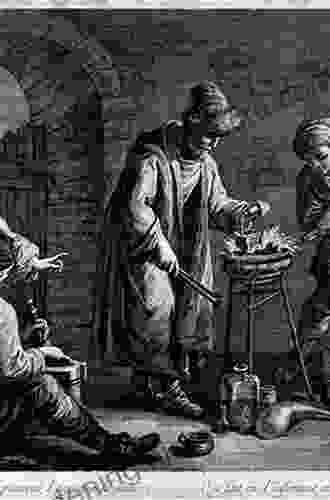
 Dillon Hayes
Dillon HayesThe Chemical Choir: Unveiling the Enchanting Symphony of...
In the enigmatic realm of science, where...
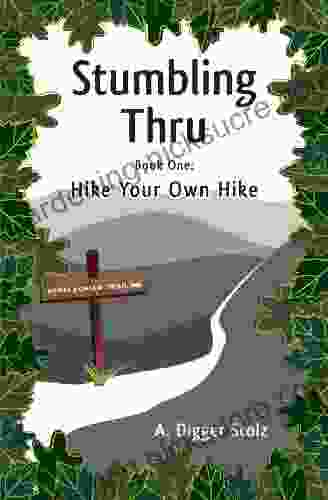
 Ryūnosuke Akutagawa
Ryūnosuke AkutagawaStumbling Thru: Hike Your Own Hike
In the realm of outdoor adventures,...

 Terry Pratchett
Terry PratchettUnlock Your Math Skills: A Comprehensive Guide to Chenier...
Math plays a vital role in...
4.1 out of 5
| Language | : | English |
| File size | : | 455 KB |
| Text-to-Speech | : | Enabled |
| Screen Reader | : | Supported |
| Enhanced typesetting | : | Enabled |
| Word Wise | : | Enabled |
| Print length | : | 336 pages |


